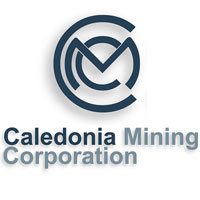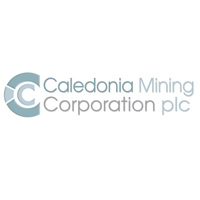Caledonia Mining Corporation (LON:CMCL) Chief Executive Officer Steve Curtis caught up with DirectorsTalk for an exclusive interview to discuss the change in people’s perception of Zimbabwe, indigenisation and how this works and the benefits of operating in Zimbabwe
Q1: SP Angel put out a positive note on Zimbabwe this morning, do you feel like finally people’s perceptions are changing?
A1: Well as you know perceptions are perceptions but Caledonia Mining operate there and we do feel that there’s a small wind of change, the economic environment is still very very tough but there are some positive sounds coming out of the government corridors especially the Ministry of Finance. If things like that come together then there will be a market difference in the performance of Zimbabwe because it is at a low low level, it can only go upwards and If things do turn around and they can access some western funds and some international funds then it’s going to be good. So I think we’re all expecting that there will be a positive change and they are small but many small signs of a positive turnaround. I can tell you for the people on the ground, it’s still very very tough, the economy is very hard.
Q2: Caledonia Mining Corporation were one of the first companies in Zimbabwe to fully indigenised, could you explain how that works?
A2: Yes, certainly. The legislations says that foreign owned entities need to have 51% of their ownership in the hands of local Zimbabwe investors and there’s a lot of debate around what that means and how you actually perceive to achieve that objective, there are also different messages coming out around different sectors in the economy but I’ll talk to the mining sector because that’s where we are and what we did. We have the Blanket Mine and the entity that needs to be indigenised is the operating entity in Zimbabwe, so that was Blanket Mine for us, and what we did is we identified four indigenous parties and we put a structure together whereby they acquired, because we sold the percentage that they took up, 51% of the operating entity. That was done on the basis that we actually donated 10% to the community, the surrounding community, which we feel is really important because we’re in the middle of the bush, we’re 150km south of Bulawayo in a very small town called Gwanda so we’re important to the community and so we donated 10% to the local community. The other 41% was taken up by three parties, one being 10% to a staff trust which is great and all of our staff are shareholders, 15% to a consortium of Zimbabwean businessmen and 16% to the National Indigenisation Fund in Zimbabwe who are the regulator around indigenisation. Those three parties owe us $30 million for their ownership and we have agreements whereby Blanket as a dividend paying entity will collect 80% of their dividend entitlement and repay us over the period it takes out of Blanket’s cash flows. So all in all it works for us, it works for our individual parties and Blanket has always been a strong dividend payer. That is apart from this last year past, 2015, where with the agreement of all our co-shareholders, Blanket did not pay dividends because it’s investing all of its spare cash into an extensive expansion project whereby we’re going to spend $70 million odd over the next five years, the main part of that exercise is sinking a new shaft from surface down to about 1100 metres. So that effectively is how the indigenisation process works for us, we have a certificate signed off by the relevant minister that says we have fully complied with the requirements of the law and we operate now very happily with our indigenous partners.
Q3: Can you tell us a bit more about what the main benefits of operating in Zimbabwe are?
A3: There are a number of benefits but the one that really strikes home for Caledonia Mining is that the labour force in Zimbabwe is very well educated, they are dedicated to their jobs because Zimbabwe is a tough place, there’s a very high level of unemployment, but as I said before we are in a rural community down in the south-west of Zimbabwe and we attract a good number of people, we employ 1100 people at the mine, who work consistently throughout the year, we operate 24 hours a day, we’ve got all of our staff members living in a village on our property and the beauty of that also is they live there with their wives and their children and that is the style of Zimbabwe. So you’ve got a happier motivated community, you’ve got a well-educated workforce and that’s contrary to what you find in some of the areas of South Africa where the labour is sort of migrant so they’re trucked in, that’s not what we see as being a good environment. The others issues about Zimbabwe, and again I talk specifically about our operations, is the mines are much shallower than South African operations so that helps your cost of production and then being located where we are in Zimbabwe. We’re about 200 km from the border with South Africa, South Africa has a very good service industry established for the mining industry, which is as everybody knows the mining industry in South Africa is struggling, so the service industry is looking for customers and we can access all the skills and the necessary consumables and we can truck them up to Zimbabwe at very competitive prices. I would think the sort of the final thing that is important is Zimbabwe historically went through some terrible times with hyperinflation, that has all gone now and the US dollar is the major currency of tender which is a strong currency but it’s for the Zimbabwe environment which is trying to get itself off its knees, it’s a very stable currency. So that is good for us, sometimes you don’t get the benefits of all the currency devaluations that you may get in South Africa for example but generally we’ve got a stable environment so we’ve got a stable currency, we’ve got a stable well-educated workforce and we’ve got a good supply line into the service industry that we need. All in all we’ve got a very nice operating mine, our mine is a dry mine so we don’t need to pump a lot, it’s not hot so you don’t need the ventilation and the cooling systems and it’s shallow, we’re only operating at 750 metres below surface and that compares very very favourably with the very deep mines in South Africa.


